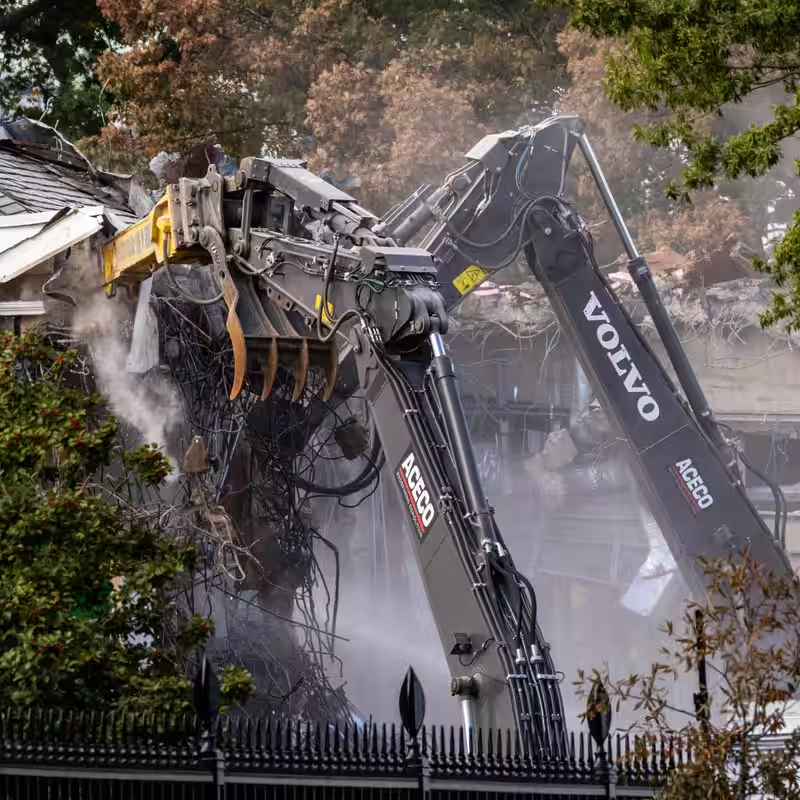Table of Contents
- Wrecking Ball at 1600 Pennsylvania
- East Wing to Ballroom: A Symbolic Shift?
- Political Backlash and Public Reaction
- Historical Precedent or Presidential Overreach?
- Broader Policy Implications
- Sources
Wrecking Ball at 1600 Pennsylvania
In a move that has left historians, architects, and political observers stunned, former President Donald J. Trump has reportedly ordered the demolition of the White House East Wing to make way for a grand new ballroom. The project—dubbed by critics as “The White House Wrecking Ball”—has reignited debates over presidential power, historical preservation, and the symbolic weight of America’s most iconic residence.
While the White House has undergone renovations before, few have been as visually and politically dramatic as this one. According to sources close to the Trump Organization, the plan includes leveling the entire East Wing—a structure that houses the First Lady’s office, the White House social secretary, and the iconic movie theater—and replacing it with a 10,000-square-foot ballroom designed for high-profile galas and diplomatic receptions.
East Wing to Ballroom: A Symbolic Shift?
The White House Wrecking Ball isn’t just about bricks and mortar—it’s being interpreted as a physical manifestation of Trump’s broader agenda to “remake America” in his image. Supporters hail the project as a bold modernization effort, arguing that the current East Wing is outdated and underutilized.
“This isn’t just a renovation—it’s a statement,” said a senior Trump advisor who requested anonymity. “The President believes the White House should reflect American grandeur, not bureaucratic inertia.”
Critics, however, see it differently. “Tearing down a historic wing to build a ballroom is less about function and more about ego,” said Dr. Eleanor Hayes, a presidential historian at Georgetown University. “It mirrors his approach to policy: demolish first, ask questions later.”
Political Backlash and Public Reaction
The announcement has triggered swift backlash from preservation groups and Democratic lawmakers. Representative Alexandria Ocasio-Cortez called the plan “a vanity project wrapped in nationalist symbolism,” while the National Trust for Historic Preservation issued an emergency statement urging the General Services Administration to intervene.
Public opinion remains divided. A recent Harris Poll shows 48% of Americans disapprove of the demolition, while 39% support it—largely along partisan lines. Social media has exploded with memes comparing the project to Trump’s gilded properties in Las Vegas and Mar-a-Lago.
Historical Precedent or Presidential Overreach?
Technically, sitting or former presidents do not have unilateral authority to alter the White House structure. Any major renovation requires approval from the U.S. Commission of Fine Arts and the National Capital Planning Commission.
However, insiders suggest Trump’s team is leveraging private donations and fast-tracking permits through sympathetic agencies. “They’re treating it like a real estate development, not a national monument,” said one former White House curator.
Historically, major White House changes—like Truman’s full gut renovation in the 1950s or Jackie Kennedy’s restoration of historic rooms—were done with public consultation and scholarly input. This project, by contrast, appears driven by personal vision over institutional process.
Broader Policy Implications
Beyond architecture, the White House Wrecking Ball reflects a larger pattern in Trump’s second-term policy agenda: sweeping reversals on Russia sanctions, a hard pivot on Israel policy, and deregulation across federal agencies. Just as the East Wing is being cleared away, so too are long-standing diplomatic norms and institutional guardrails.
“It’s not just about a ballroom,” said foreign policy analyst Marcus Lin. “It’s about resetting the entire framework of American governance—and who gets to decide what stays and what goes.”




